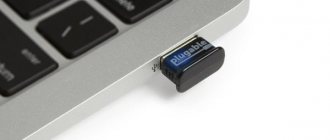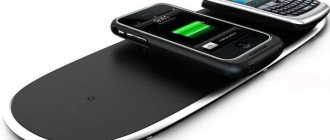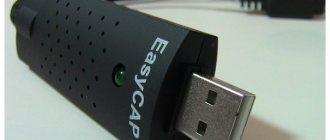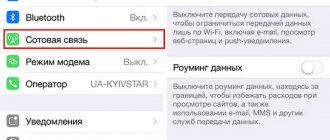The new generation of technical devices amazes with their diversity. For example, have you ever thought that there are so many cords for charging various devices that you can’t count your fingers? And each device only needs its own charging. But there are also universal chargers that can charge any piece of equipment, be it a phone or a camera. This article will discuss the universal “frog” charger.
Advantages of charging-clothes
Charging "frog" has the following advantages:
- Versatility. The type of charger in question is suitable for all batteries of mobile phones, cameras, video cameras, pocket computers, MP3 players and other small-sized equipment that operates using a lithium battery.
- Easy to use. To use the charger, you do not need any additional knowledge, skills or experience. However, before using the “frog” to charge the battery, you need to be familiar with the markings and clearly understand which indicator says what. Read more about labeling below.
- Ease of use. The “frog” for charging batteries is suitable for use wherever you need it. The main condition is the presence of an outlet.
- Compactness. The overall dimensions of the charger are minimal, which allows you to carry it with you in a backpack, bag or even pocket.
Some useful information
In addition to a cell phone, the Frog charger is capable of charging a camera, pocket computer or navigator, but only if lithium batteries with a small capacity are used. The device is connected to a network with standard voltage. When the battery is fully charged, the device will automatically disconnect from the network. As a rule, this takes about two to three hours.
There are several types of frog devices that can be connected to different sources of electricity:
- To a regular household outlet with a voltage of 220 volts.
- To the car network - 12 volts.
- Connection to PC via USB port - 5 volts.
The most practical and common is the “frog” charger, powered from the home network. The choice of device type depends on each person's personal preference.
Types of "frogs"
Depending on the type of connection, frog charging can be:
- connected to a USB cable and then to a PC – five-volt;
- automobile – twelve-volt;
- operating from a standard socket - 220-volt.
The classic option is a “frog” for charging batteries, designed for a voltage of 220 Volts. On the back of the device cover there are two sliding pins, which are located parallel to each other. They must be separated to a distance that corresponds to the distance between the contact areas of the lithium battery.
Universal “frog” charging has “+” and “-” polarities. Depending on the charging clip model, it is adjusted either automatically or manually by pressing special buttons.
Types of universal chargers
Today, you can find several types of devices of this type on sale, designed for lithium batteries of mobile phones and other small-sized equipment that differ in power source:
- from car cigarette lighter;
- from USB port;
- from an electrical outlet.
Also, universal charging can be automatic or semi-automatic. The main difference is the number of indicator lights. Automatic machines have three, and semi-automatic machines have four. An automatic “toad” will automatically determine the correct polarity, while a semi-automatic one will require additional control of the correct connection using buttons.
Explanation of markings
The “frog” charger is marked on the case. Ignorance of the designations excludes the possibility of correct operation of the charger in general.
“TE” is an indicator that the connection is working properly.
“CON” - the LED is active if the battery is connected correctly when pressing “TE”.
“PW” - indicates the presence of a network connection. Can become active when the battery is fully charged.
“CH” - is in a flashing state throughout the entire time the battery is being charged.
“FUL” - indicates the battery is fully charged.
“CO” indicates that “+” and “-” are mixed up.
How long does it take to charge a battery with a frog?
A frog charger is considered an ideal and safe option for recharging the battery of a mobile device due to the fact that it supplies a very low charge current. For most models:
- the output voltage fluctuates in the range of 3.5-4.8 V, which is several times less than the parameters of a standard power supply;
- The current does not exceed 240-300 mA, with a maximum possible of 1.5 A.
Taking into account these characteristics, we can conclude that charging a smartphone battery with a capacity of 200 mAh will take a little more than 13 hours, 2000 mAh – 6.5 hours.
Charging "frog": how to use?
Using a frog charger is nothing complicated or supernatural; however, to ensure its proper and efficient operation, you must follow the operating instructions.
How to use the frog to charge the battery? Step-by-step instructions are given below:
1. Turn off the mobile device and remove the battery from it.
2. Open the frog charger by pressing the clothespin.
3. Insert the battery into the frog so that the two terminals match. In the case where the charging device is equipped with four terminals, two side ones are used.
4. Press the “TE” button. As a rule, it is located on the left side of the charger.
5. Check that the connection is correct by looking at the corresponding indicator (“CON”). It should be noted that the indicator LED may not light up not only as a result of incorrect connection of the terminals, but also due to the fact that the battery is completely discharged. If the latter option occurs, then the “frog” for charging the phone and the device’s battery are connected for about 5–7 minutes to an electrical power source - an outlet.
6. Connect to the network. Accompanied by an active “CH” indicator.
7. Disconnect the terminals after the “FUL” indicator on the left lights up.
Instructions for using the charger
The frog charger is designed for charging Li-Ion batteries that are used in cell phones, GPS receivers and cameras.
It operates from a 110-220 V network. Output voltage is 4.2 volts, current is 200 mA. The charge occurs automatically and is controlled by the microcircuit, and it automatically turns off when the required level is reached. Standard charging time is 1.5 hours. It is necessary to clamp the battery into the frog so that the contacts of the charger are on the + and – terminals of the battery. If the battery has 3 or 4 contacts, you usually need to use the outer 2. If the connection polarity is correct, then when you press the TE
(left) the first green LED
CON
.
If it is not lit, press the right CO
(polarity reversal) and repeat pressing the first button.
On some frogs, CON
may light up when connected without pressing the button - also the correct polarity. There are also models that will automatically determine the polarity. Accordingly, there is no right polarity reversal button.
If everything is fine – CON
lights up green, plug into a 220V socket.
PW
lights up and
CH
(charge) starts to light or flash.
When charging is complete, the right FUL
.
If CON
does not light up at all, the battery may be dead.
Then connect randomly in any polarity and plug it into the network for 5 minutes (not for long - it’s not scary). If CH
CH
behaves then .
If PW
and
FUL
, then most likely the battery in the frog is not in contact (so the LED lights up without the battery at all) - move it towards the contacts.
How to check functionality
There is a verification algorithm that will help make sure that the frog charger is working properly. Let's look at how to use it.
The key to proper functioning of the device is the correct polarity. To check it, you need to click on the button located on the left. If the lights near the “CON” and “FUL” indicators light up, the connection to the terminals is correct. Inactive indicators indicate a connection error. In this case, click on the button located on the right.
Be extremely careful, since the indicator lights may not light up not only for the above-mentioned reason. For example, the tablet battery will move and the pins of the clothespin will not touch the correct pads.
If the test was successful and everything that was needed blinked, then the “frog” for charging the battery is safely connected to the outlet. “PW” and “CH” should light up. When the charging process is complete, the LED next to the “FUL” indicator is activated.
The total time required to fully charge the battery of a phone, camera, player, set-top box or other technical device depends on the battery capacity. On average - from 2 to 5 hours. At the same time, if it takes, say, 3 hours to fully charge the battery of your device, and the “frog” was connected to the network for, for example, 5 hours, there is no reason to worry: the clip-on charger automatically stops charging the battery when the last maximum possible charge level is reached .
How to charge your phone battery with a frog correctly
Using the “toad” adapter in everyday life is not difficult, however, in order for it to function correctly and safely throughout its entire service life, it is advisable to follow the recommendations of specialists.
Before you start charging the battery, you should make sure that it is in good condition. It is not recommended to use batteries with dents, defects, or damaged metal coating. The process algorithm is given below.
- Disconnect your smartphone (tablet) and remove the battery.
- Holding the tab of the clothespin, open access to the terminals, and insert the battery so that the contacts touch their ends tightly until they stop.
- If there are no markings, the two outermost contacts should be used for connection. Large and “minus” signs are indicated on the battery label.
- Next, plug the device into a power outlet.
- To check the correct polarity selection, you should activate the TE test button located on the left - the green indicator should flash and CH should blink quickly.
- In semi-automatic devices, two LEDs should light up: CON and PW.
- After the charging process is complete, the FULL indicator will flash.
Instructions
For any manipulation of a frog, certain actions must be performed. To charge correctly, it is important to follow a number of rules. They include several steps:
After all the steps have been completed, it is important to monitor the indicators. One should be green, and the second, red, should blink. This will ensure that the battery is charging successfully.
After approximately a few hours (2-3) the battery should be charged. Changing the colors of the light bulbs will help you verify this. So, the red light will disappear and will be replaced by green. You will see two green lights. The battery is ready for use.
It happens that the battery that needs to be recharged is faulty. The following facts may indicate this:
The time it takes to recharge a particular battery depends on the battery capacity. Typically, the average time is from 2 to 5 hours. Using frogs is very simple and convenient. And the cost of the device is low. Charging batteries is quick and easy, as is using the charger.
Video: How to charge the battery without a phone
The universal charger for charging lithium batteries is popularly called the frog. The standard charger may fail or get lost. Then the frog will come to the rescue. Most universal chargers are used to restore the charge of phone batteries, but they can also be used to charge the batteries of cameras, players and other gadgets that run on lithium batteries. In this article we will look at the types, design, use and some models of “frogs”.
In the classic version, the frog consists of a plastic case, a plug for connecting to a 220-volt household power supply, a clamp and contact terminals for connecting the battery, as well as indicators and a controller board. Due to the fact that the terminals can be installed at a certain distance, the frog can be adapted to charge batteries with different contact pads.
Somewhat earlier, when phone manufacturers released their models with individual charging connectors, if the charger was lost or broken, the owner actually lost the ability to use the gadget. It was necessary to repair the charger or purchase a new one. In such a situation, the universal frog was an indispensable device that could charge almost all commercially available cell phone batteries.
Here, for example, is a charger for an old Siemens cell phone.
Or for the ancient clamshell Sony Ericsson Z550i.
As a result, memories from phones from different manufacturers were incompatible.
In this case, the frog came to the rescue. You just had to take the battery out of the phone, set the required distance on the frog terminals, insert the battery and connect the device to the network.
At the same time, you can easily charge batteries of different sizes and with different contact pads. Here is the Nokia BL-5C.
Or this Samsung EB-L1F2HVU.
It was not possible to connect the phone directly to charge or transfer data via the USB port. It was necessary to use special adapters. Examples of such cables are shown below.
Subsequently, manufacturers unified their models and chargers for the USB interface. Standard chargers now have a plug for connecting to the network and a USB output.
And frogs also began to evolve. Almost everyone has a USB interface. The contact terminals were retained, since the population still has many old cell phones in use.
Although there are more and more models equipped with only USB ports. Third-party manufacturers add additional features to their devices in the form of various indicators and displays. Below you can see such a modern frog with two USB ports and a display showing the current voltage and charging current.
Recently, frogs with a USB 3.0 interface have become increasingly common. Among them there are models that provide a charging current of up to 3.1 amperes.
Some manufacturers have developed real multifunctional combines based on frogs, which allow you to charge various batteries with customizable parameters. As a rule, they have a liquid crystal display and additional controls.
What devices can be charged with a frog?
Of course, such a charger cannot be used if the battery is integrated into the smartphone body. Many budget models do not charge batteries larger than 2000 mAh. Typically, information about capacity, specifications, and limitations can be found on the case or in the documentation.
A frog charger will also be needed by those who have purchased rare phone models or Chinese analogues of branded gadgets. They may be equipped with non-standard charging connectors or other complications, which will make it difficult to find an AC adapter in the event of a breakdown or loss of the original accessory from the kit. In this case, frog charging will help.
You can also charge:
- camera or video camera battery;
- battery from a remote controlled car;
- Walkie-talkie battery;
- and almost any lithium battery.
This method also has two significant drawbacks. Firstly, the battery will have to be removed from the phone while it is powered, which means you won’t be able to use it until the required battery charge level is reached. Secondly, the charging process is usually much slower than from.
Checking functionality
On the side surface of the classic “frog” type there is a button marked with the inscription TE , i.e. "testing". It is used to check the polarity of the connected battery. Pressing this button once turns on the CON diode to turn green, confirming that everything was done correctly.
What is Google Cast technology and how to set up and use the Google Chromecast module
If the CO N does not light up , press the button on the right, which changes the polarity.
If no buttons are found on the side panels of the device, most likely the model tests polarity automatically .
Also, the indicators may not light up if the battery has moved to the side and its contacts no longer interact with the charger terminals.
Varieties
Based on their design, frogs can be divided into three broad categories.
- Network models. They receive power through a plug inserted into a household electrical outlet. In Russia and Europe, 220 volt models are used. It can also be found in 110 volt versions, which are used in the USA.
- Automotive devices. Here, instead of a power plug, there is a connector for a car cigarette lighter socket. The charger receives power from the vehicle's on-board network.
- These chargers receive power from the USB port. Such models have practically disappeared from sale. They can be useful in cases where the phone does not have a USB interface, and you charge the battery directly in the frog. And the charging itself is connected via USB, for example, to a computer or laptop. If the cell phone has a USB port, then such charging loses all meaning. In this case, it is easier to connect the gadget directly to the computer.
At the output, network and car frogs have a USB interface or adjustable terminals for charging batteries directly.
To charge phone batteries directly, frogs can have terminals in the form of two elongated antennae (classic version), as well as short terminals in a special recess in the case. The width of the terminals can be adjusted depending on the contact pads of the battery in both cases.
The main characteristics and their meanings are given below.
- Input voltage from 100 to 240 volts, 50/60 Hz (if it is a mains charger).
- Output voltage. From 2 to 9 volts. This allows you to charge almost any lithium battery in modern mobile devices. Although if charging is carried out via the USB interface, then the device may contain another type of battery. The main thing is that the declared electrical characteristics are suitable for them.
- Output current. From 1 to 5.4 amperes (in most cases up to 3 amperes). This allows you to quickly charge the batteries of smartphones and tablets. They are not designed to charge larger batteries, such as those from laptops.
- Dimensions. Here everything can be individual. But the vast majority of devices have a length of no more than 20 cm. The length is indicated because this is the largest dimension of such devices.
- Additional features. To stand out from others, manufacturers equip their models with battery charge indicators, as well as information displays. In most cases, such chips are not necessary, and they should be chosen depending on desire and financial capabilities.
This method is usually used for emergencies, but you need to be prepared for anything.
The frog charger is designed for charging. Visually, it is a compact unit, on one side of which there is a plug for the socket, on the other there is a slot for the battery in the form of a contact clip. The terminals connecting the frog to the battery are movable, so almost any removable battery can be charged in this way.
The charger in most cases has an indication that will show whether the battery is connected to the frog correctly. If the contacts are connected correctly, the battery will begin charging. If not, the corresponding indicator will light up. As a rule, the main reason for the lack of charging is reversed polarity.
Malfunctions and solutions
Here are several typical malfunctions typical of universal chargers, and we will offer solutions to the problem:
- CON indicator , although everything is done correctly. Most likely, the battery is completely discharged. In this case, you can try to boost it using a laboratory power supply.
- PW light does not light - the fuse may have blown and should be replaced.
- There is no output voltage - there is a high probability that the capacitors in the device microcircuit are broken.
- The device turns on normally, but after a few seconds it “ goes out ” - the device that protects the “frog” from overload is triggered. The load circuit needs to be tested.
Smart TV - what is it?
If used carefully, this useful device will last a long time. Put it in your backpack or handbag and be sure that it will certainly be useful at the right time.











